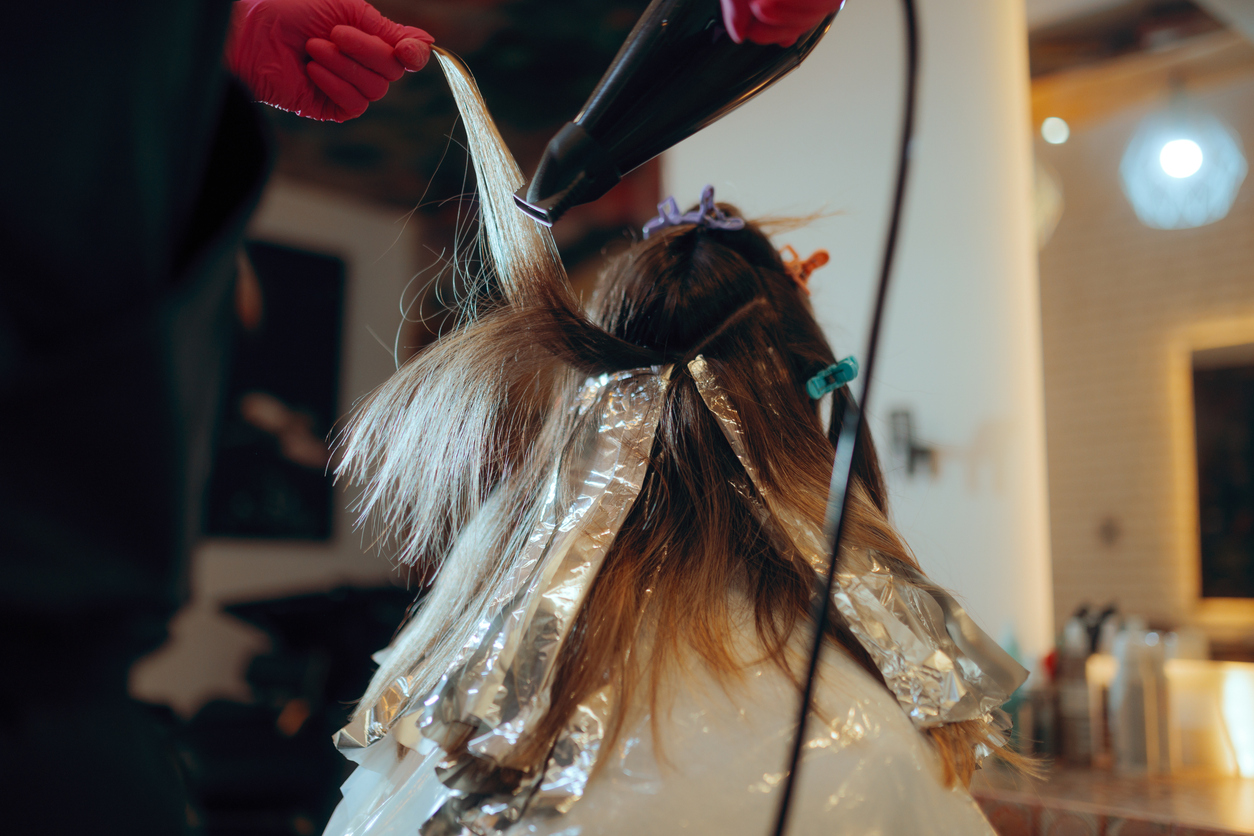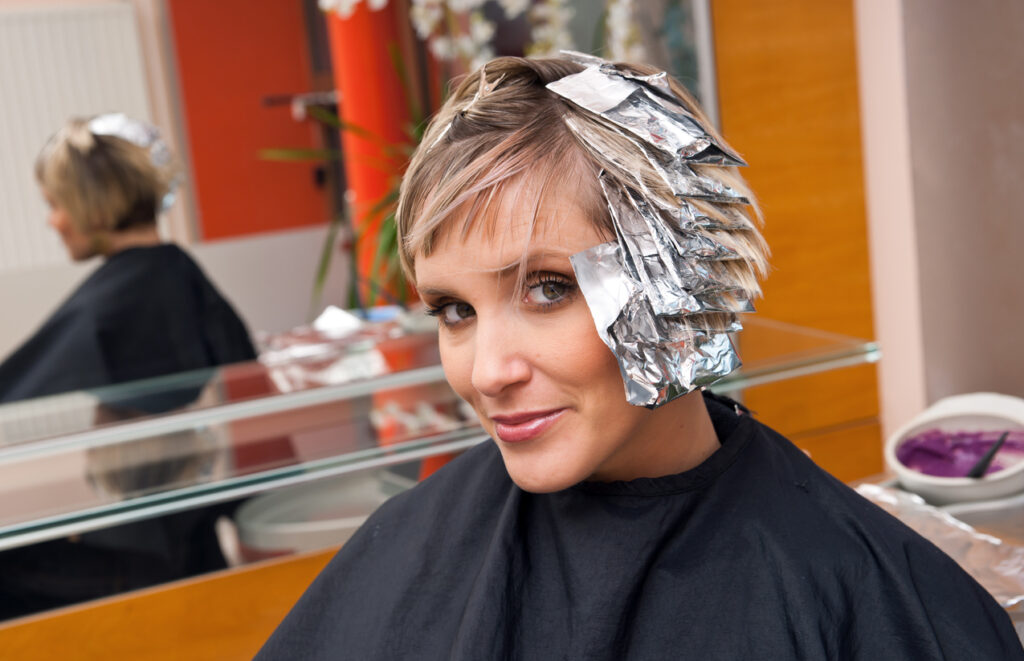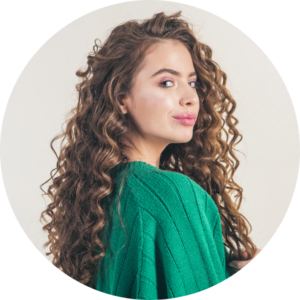Balayage vs Foiling: How to Achieve Multidimensional Hair Color

Natural hair is rarely one solid colour, thanks to the sun rays that lighten the hair, creating the highly sought-after sun-kissed look. You can achieve the same sun-kissed multidimensional hair colour through balayage and foiling techniques. These two methods apply lightener and colour to various strands of your hair, creating varying shades and tones throughout your hair. Read on for the difference between balayage and foil and how they add dimension to your hair.
What is Balayage?
Balayage is a free-hand painted hair colouring technique that originated in France in the 1970s to introduce natural-looking hair highlights. The name derives from the French word “balayage”, which emphasises the “sweeping” and “painting” motions of this technique. The style has since evolved through the years but retains many of its basic principles.
If you have had a blonde all-over colour, then you know how high maintenance it is, especially with the harsh regrowth lines that must be coloured every few weeks to maintain the look.
Balayage highlights subtly blend your natural root colour throughout the length of your hair, creating a softer, natural, sunkissed look with less noticeable regrowth lines.
Balayage is commonly used to highlight blond hair, but it can be used for darker hair or to make a statement with bold colours like reds.
Balayage Colour Techniques for Multidimensional Hair Color
Although balayage is a free-style art, it takes an experienced professional hand to achieve a striking multidimensional hair colour. It starts with the right tools and materials, including brushes, a balayage paddle, lighteners, and bleach, after which the stylist chooses the best sectioning application technique to achieve the desired result.
Stylists use one of three sectioning techniques to create the desired effect. These are:
- Horizontal sectioning for more volume
- Vertical sectioning to create the illusion of longer hair
- Diagonal sectioning for subtle highlights
These sectioning techniques can be used with different balayage painting techniques, such as:
- Feathering which applies light strokes to the hair, giving a soft, natural, and sun-kissed look to your hair
- Ratting or backcombing to add texture and depth to the hair for a lived-in appearance
- Weaving for multidimensional highlights
What is Foiling?

Foiling is another technique that creates multidimensional hair colour by wrapping hair in foils. So, what are hair foils in hairdressing, and how do hair foils differ from highlights?
Hair foils are small aluminium sheets that hairdressers use to separate individual strands of hair to be coloured, while highlights are the lighter strands of hair attained by colouring hair. The foil prevents hair colour from bleeding to other sections of the hair while speeding up the lightning and colouring process.
Hair foils are perfect for traditional highlights and are used to create intricate designs and dimensions in coloured hair.
Foiling Techniques for Multidimensional Hair Color
Like balayage, hair foiling techniques matter when creating multidimensional hair colour. One of the important aspects is choosing where the highlights will go, the colours to use, the extent of hair lightening, and the layout of the foils.
As with balayage, the stylist can section the hair vertically, horizontally or diagonally to achieve different looks when offering a hair foils service. The horizontal placement is perfect for a blond all-over colour. Vertical placement is perfect for creating a lived-in texture and appearance, while diagonal foil placement is perfect for soft blonde hair foils.
Once a stylist has determined the placement, the next step is to section step-by-step the strands that will be coloured and wrap them in foil to prevent seepage and kickstart processing.
Difference Between Balayage and Foils
While both methods can create the same effect on hair, the application technique is the main difference between balayage and foils. Balayage offers more creative freedoms, emphasizing free hand movements, usually relying on the stylist’s ability to determine how hair naturally interacts with light.
Conversely, foiling is more structured, allowing stylists to control the outcome, usually resulting in uniform colouring.
With traditional balayage, stylists have more freedom to be creative, but modern stylists have incorporated techniques such as foilayage, which combines traditional foiling and balayage techniques for a more controlled outcome.
In both techniques, stylists can choose to add colour and dimension throughout the hair or on select areas such as face-framing strands, around the roots, or the areas where the sun naturally reflects on the hair.
| Balayage | Hair Foils | |
| Appearance | Less noticeable demarcation line at the roots More natural appearance | Harsh demarcation line at the roots More uniform highlights throughout the hair |
| Maintenance | Low maintenance with more spaced-out salon visits | High maintenance; requires regular salon visits to retouch roots |
| Best for | Lightening hair by two to three shades | Lightening hair by four or more shades |
Choosing between balayage and foiling depends on the result you desire. Consulting with a hairstylist before choosing either technique can help you narrow your choices based on the look you’re going for, your skin tone, base hair colour, hair health, eye colour, and maintenance requirements.
Final Word
Balayage and foiling are techniques to achieve a multidimensional hair colour but with vastly different results and maintenance requirements. Balayage is perfect for a more natural, sun-kissed, low-maintenance look, while foils work well for structured highlights. If you’re unsure what to choose, contact our hair stylists for a hair colour consultation.






